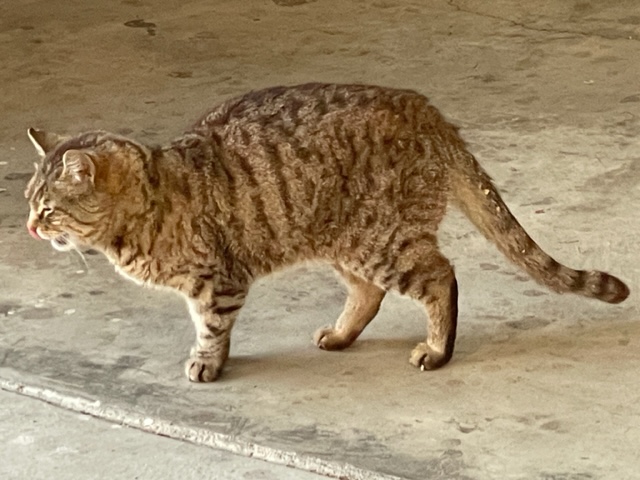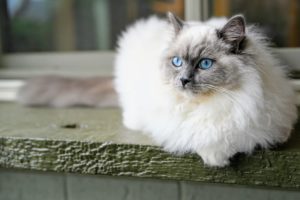Matted fur on cats is a common problem that can cause discomfort, pain, and health issues for your cat. It can also make your cat look neglected and unattractive. If you are a cat owner, you probably want to know how to prevent and treat matted fur on your cat.
In this article, you will learn everything you need to know about matted fur on cats, including:
- What is matted fur and why does it happen
- What are the health risks of having matted fur on your cat
- How to prevent matted fur on cats with regular grooming
By the end of this article, you will have a better understanding of how to keep your cat’s fur healthy and beautiful. Let’s get started!
What is Matted Fur on cats?

Matted fur is a condition where hair strands become knotted and tangled together, forming clumps or balls of fur. These clumps can pull on the skin, restrict the movement, trap moisture and dirt, and damage the skin. Matted fur can affect any part of the cat’s body, but it is more common in areas that are prone to friction or contact with surfaces, such as the armpits, chest, belly, legs, tail, and collar.
What causes matted fur on cats?
Matted fur can happen for various reasons, such as:
- Inadequate grooming: Cats keep themselves clean by using their tongue, teeth, and paws to get rid of dead hair, dirt, and parasites from their fur. However, sometimes due to sickness, old age, or obesity they can not groom themself. This can cause excess hair to build up in their coat and create mats. To prevent this, you can apply some cat grooming techniques . These techniques will help your cat maintain a healthy and shiny fur. You can also use some of the best brands of cat clippers for matted fur to safely remove any stubborn mats from your cat’s coat.
- Long-haired breeds: Some cat breeds have long, dense, or curly fur that is more prone to matting than short-haired breeds. Examples of long-haired breeds include Persians, Himalayans, Maine Coons, Ragdolls, Norwegian Forest Cats, and Siberians. These breeds require more frequent and thorough brushing to prevent mats from forming. To take care of your long-haired cat’s fur in good condition, you need to know how to brush, comb, trim, wash, and dry it properly.

- Underlying health issues: Some health problems can affect your cat’s grooming ability or cause changes in its fur condition. For example:
- Arthritis: According to PetMD, arthritis affects about 20% of adult cats and 90% of senior cats.
- Hyperthyroidism: Hyperthyroidism is a condition where the thyroid gland produces too much thyroid hormone. It can cause excess oil production in the skin that can make the fur sticky and prone to matting. According to VCA Hospitals, hyperthyroidism affects about 10% of cats over 10 years old.
- Skin infections or allergies: Skin infections or allergies can cause itching and scratching that can damage the fur and skin. They can also cause scabs or crusts that can get tangled in the fur.
- Outdoor cats: Cats that spend time outdoors are exposed to various elements that can contribute to matting. For instance, dirt, debris, plant matter, burrs, or sap can get stuck in their fur and cause tangles. Wet weather can also make the fur clump together and form mats.
What are the health risks of having matted fur on cats?
Matted fur is not only an aesthetic issue but also a health hazard for your cat. Some of the health risks associated with matted fur are:
- Discomfort and pain: Matted fur can pull on the skin and cause discomfort and pain for your cat. This can affect its mood and behavior, making it more irritable or aggressive. Your cat may also try to bite or scratch the mats, which can worsen the situation.
- Skin infections: Matted fur can trap moisture, dirt, bacteria, and parasites under the skin. This can create a favorable environment for infection and inflammation. Your cat may develop skin lesions, sores, abscesses, or hot spots that require veterinary attention.
- Restricted movement: Severe matting can limit your cat’s movement and activity. The mats can interfere with your cat’s ability to walk, run, jump, or groom itself. This can affect its physical and mental well-being.
- Skin damage: Matted fur can damage the skin by causing abrasions or tears. The skin under the mats can also become thin and fragile due to lack of oxygen and blood flow. This can make it more susceptible to injury or infection.
How to Prevent Matted Fur on Cats
The best way to prevent matted fur on cats is to provide regular grooming care for your pet. Here are some tips on how to prevent matted fur on cats:
1. Regular brushing: Brushing your cat regularly is the most effective way to prevent mats from forming. Depending on your cat’s breed and coat type, you may need to brush it daily or weekly with one of the top 5 cat brushes for matted hair. Use gentle strokes and work from the head to the tail, paying attention to areas that are prone to matting such as the armpits, chest, belly, legs, and tail. If you encounter any tangles, try to work them out with your fingers or a wide-toothed comb. Avoid pulling or cutting the mats, as this can hurt your cat or damage its fur.
2. Proper nutrition: Feeding your cat a balanced and high-quality diet can help support healthy skin and fur. Look for foods that contain omega-3 and omega-6 fatty acids, which can help moisturize the skin and coat. You can also supplement your cat’s diet with fish oil or flaxseed oil capsules, which can provide additional benefits for the skin and fur.
3. Grooming services: If your cat has long or thick fur that is difficult to maintain, you may want to consider professional grooming services. A professional groomer can help keep your cat’s fur clean, trimmed, and free of mats. You can also ask the groomer for advice on how to care for your cat’s fur at home and what tools to use.
Conclusion
Matted fur on cats is a common problem that can cause discomfort, pain, and health issues for your pet. It is important to understand what causes matted fur, how to prevent it, and how to treat it if it happens. By providing regular grooming care for your cat, feeding it a nutritious diet, and seeking professional help when needed, you can keep your cat’s fur healthy and beautiful.
With a passion for cats and years of experience in cat care and grooming, I have gained valuable insights and expertise that I want to share with other cat lovers. I believe that every cat deserves the best care possible, and through this platform, I aim to empower cat owners like you to provide the utmost love and care for your feline companions.



